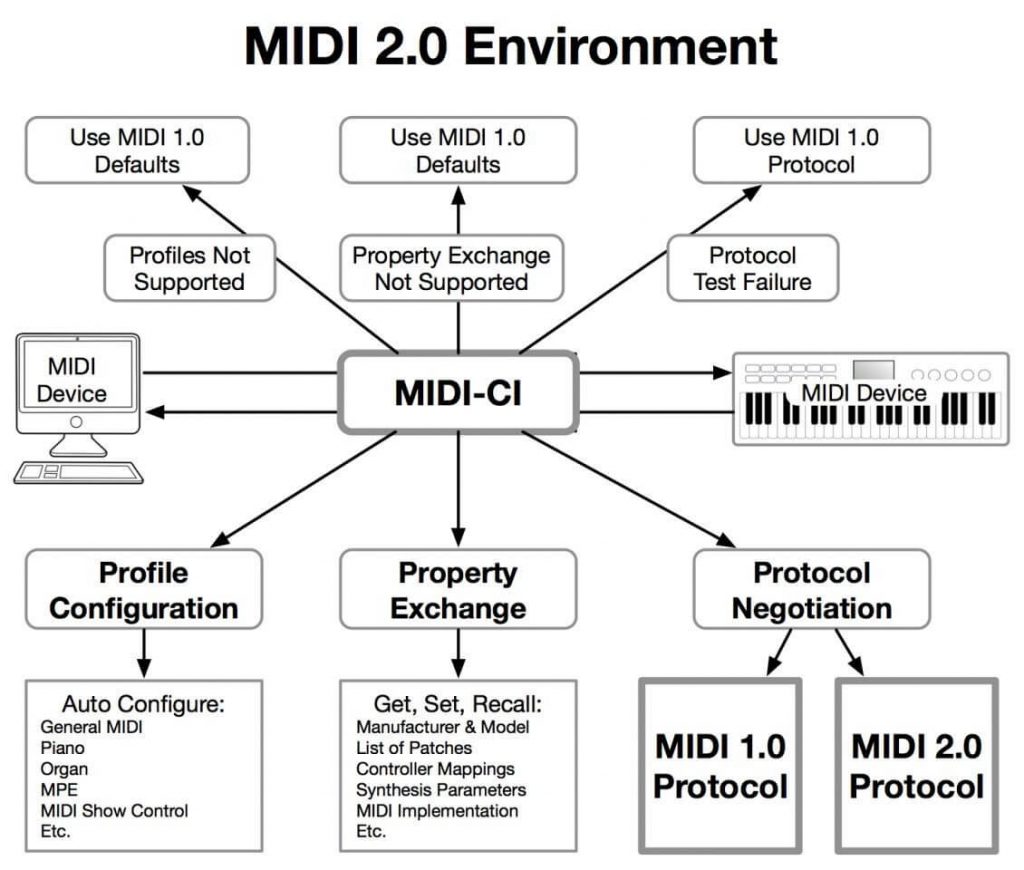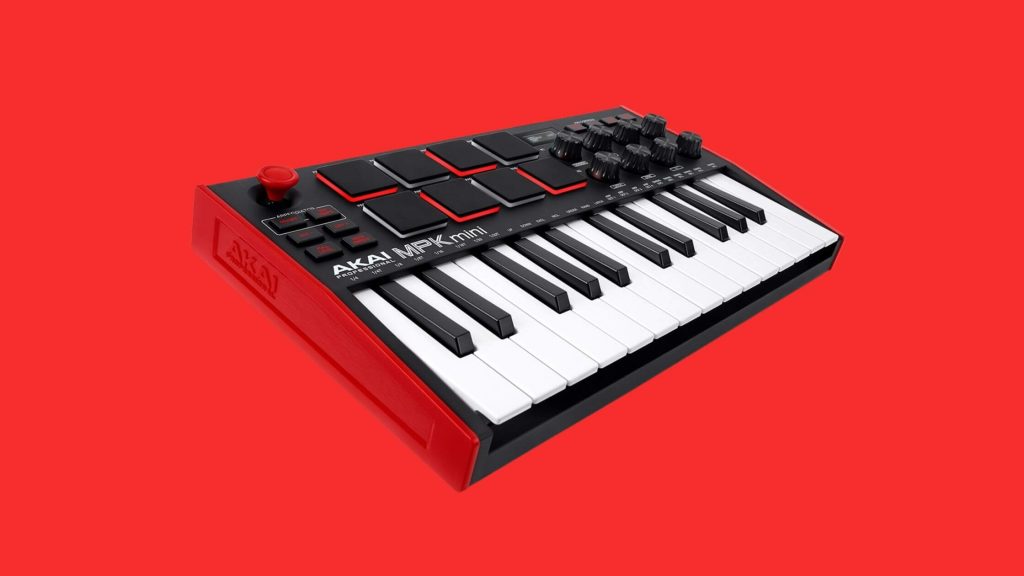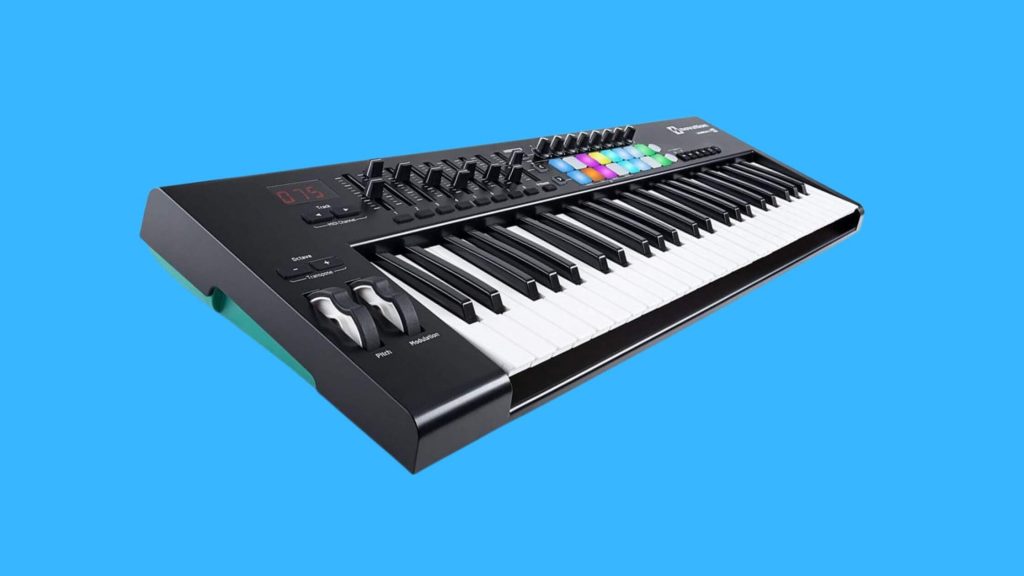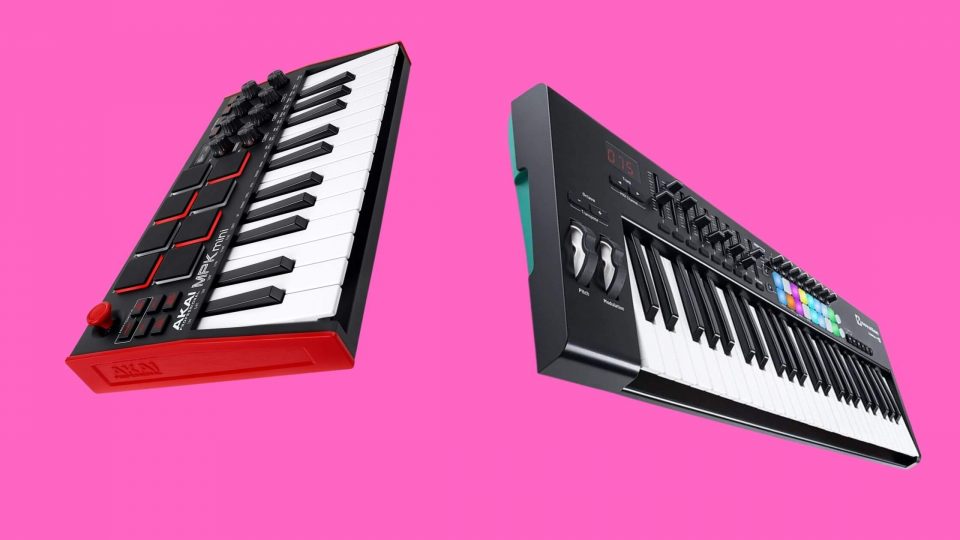What is MIDI 2.0?
MIDI Recapped
So you’ve seen just how MIDI controllers work, and you’ve been having a field day experimenting with these music tools. You have peace of mind knowing just what is happening when you press down on keys, move faders, and twist encoders.
You’ve been having a blast with Mixxed percussion samples on your launchpad controller, but you found it stressful to map your inputs to your DAW…
But what’s MIDI 2.0?
Let’s find out…
MIDI 2.0 vs MIDI 1.0
MIDI 2.0 spec was released in early 2020, after 40 years of MIDI 1.0 helping musicians like you bring their ideas to life.
The fact that MIDI 1.0 was left unaltered for this amount of time speaks volumes about the power it brings to the community. However, some clever computer people from companies like Apple, Google, Native Instruments, and Ableton gave it an upgrade.

MIDI 2.0 Reduces Set Up Time
In MIDI 1.0, communication goes one way – from the controller to the computer.
This means that you have to manually set up any new controller via selecting what MIDI channel the keyboard uses, you have to “activate” the controllers, and so many things that you wish would just be done automatically.
Well, your prayers have been answered. MIDI 2.0 has bidirectional communication, so the computer and controller communicate with each other. This also means that two or more MIDI controllers that are plugged into the same set-up will also communicate with each other!
This works via a simple process. MIDI 2.0 has a communication process called MIDI CI (capability inquiry) which consists of protocols that the controller carries out when a new device is plugged in.
One of those is Protocol Negotiation. This is the very first protocol your MIDI 2.0 device will carry out, and it determines whether a connected device has MIDI 1.0 or 2.0 capabilities. If the connected device only has MIDI 1.0 capabilities, your 2.0 device will communicate as a 1.0 device instead.
Therefore, the first major upgrade that MIDI 2.0 brings is auto communication between devices!
As well as Protocol Negotiation, your MIDI 2.0 device will undergo Profile Configuration. To combat the time taken to set up your controller in your DAW, assign its features to corresponding knobs and faders in your software, and the rest, MIDI 2.0 does all of this automatically!
If you’re using a mixer control surface, 2.0 will automatically configure your hardware towards your DAW mixer and you can jump straight in and start making music! As well as this, your control surface will be configured to any plugins that the faders, knobs, and buttons can be used.

MIDI 2.0 Improved Data Transfers
If you were curious to know how many midi channels there are in MIDI 2.0, the answer is a whopping 256 channels! That’s 240 additional channels compared to MIDI 1.0. The possibilities just became almost endless.
With 32 bit resolution, compared to 1.0’s 7 bit, complicated communication is now much more detailed and efficient.
MIDI 2.0 has parameter limits in the 1000’s. You’ll remember that 1.0 has a parameter limit between 0 – 127, so 2.0 allows for your pads, knobs, and faders to offer much more detailed adjustments on any parameter that they’re assigned to. Could you see encoder knobs becoming much more popular than pot knobs now?
Bringing back our improved set-up time segment, MIDI 2.0 automatically grabs information from all other connected devices. This includes any parameter information, production information such as manufacturer and model name, lists of featured presets and patches, and any controller mappings.
If you have a MIDI 2.0 enabled synth, your DAW will automatically connect!
Universal MIDI 2.0
To finish this article off, we thought we should talk about what makes MIDI 2.0 so well built for music production in our day and age.
MIDI packets, which are the multi-byte packets of information transported between devices that bring MIDI to life, have been made to be universally transportable across USB, Apple’s Lightning Bolt, ethernet, and any other digital transport. This allows for ‘plug and play‘ at any time and anywhere!
As well as this design, MIDI 2.0 has been future-proofed.
Room, if you can call it a room in a digital space, has been left for future developers to design new MIDI messages that can be easily implemented into the MIDI language.
This means that applications for devices that we couldn’t dream of today can be easily used tomorrow inside the MIDI language that we’re already comfortable with.

MIDI 2.0 Explained
MIDI 2.0 is here to stay for the next 40 years at least.
The foundations were laid in 1982, and here in the 21st century, we’re seeing the love child of past and present.
Because MIDI 2.0 has only recently been released, it’s not been so well adopted around the world yet. Sure, the major studios and producers use 2.0 enabled gear… but not common folk like you and me (well, maybe you do).
MIDI 2.0 is a massive expansion for the functionality of MIDI. It makes devices more user friendly, and prioritises what you love the most – making music!
Say goodbye to time draining set ups, MIDI 2.0 is our new best friend.
